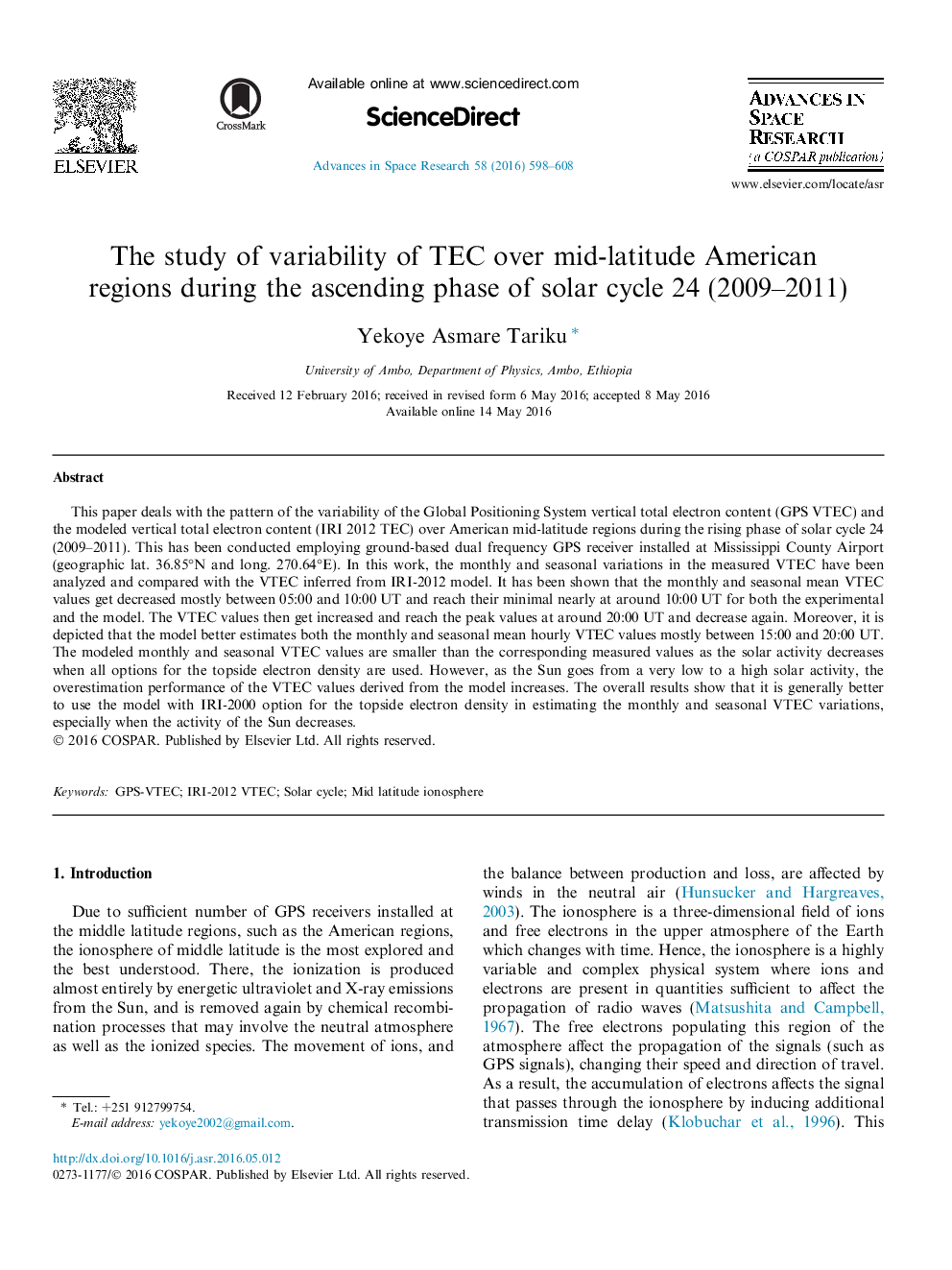| Article ID | Journal | Published Year | Pages | File Type |
|---|---|---|---|---|
| 1763271 | Advances in Space Research | 2016 | 11 Pages |
This paper deals with the pattern of the variability of the Global Positioning System vertical total electron content (GPS VTEC) and the modeled vertical total electron content (IRI 2012 TEC) over American mid-latitude regions during the rising phase of solar cycle 24 (2009–2011). This has been conducted employing ground-based dual frequency GPS receiver installed at Mississippi County Airport (geographic lat. 36.85°N and long. 270.64°E). In this work, the monthly and seasonal variations in the measured VTEC have been analyzed and compared with the VTEC inferred from IRI-2012 model. It has been shown that the monthly and seasonal mean VTEC values get decreased mostly between 05:00 and 10:00 UT and reach their minimal nearly at around 10:00 UT for both the experimental and the model. The VTEC values then get increased and reach the peak values at around 20:00 UT and decrease again. Moreover, it is depicted that the model better estimates both the monthly and seasonal mean hourly VTEC values mostly between 15:00 and 20:00 UT. The modeled monthly and seasonal VTEC values are smaller than the corresponding measured values as the solar activity decreases when all options for the topside electron density are used. However, as the Sun goes from a very low to a high solar activity, the overestimation performance of the VTEC values derived from the model increases. The overall results show that it is generally better to use the model with IRI-2000 option for the topside electron density in estimating the monthly and seasonal VTEC variations, especially when the activity of the Sun decreases.
